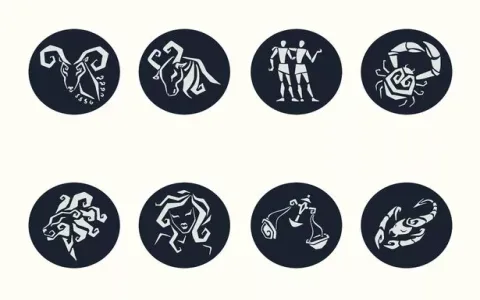I’ll be honest, I never really paid much attention to those silly daily horoscopes. But lately, I’ve been using that whole “Virgo Warning” concept—the deep dive into self-criticism, the need for order, the total aversion to emotional mess—as a structural framework for survival in the modern office. Because let me tell you, I spent years of my career getting absolutely pulverized by avoidable conflicts. I’d walk in focused, organized, and ready to crush my tasks, only to have some passive-aggressive email or pointless meeting drama suck all the air out of the room by 10 AM.
I realized the problem wasn’t just external; a lot of the time, I fueled the fire because my default setting is to jump in and try to fix things, or, worse, point out exactly where the process broke down. That’s a conflict magnet. I knew I had to build a personal shield, a workflow for avoiding the daily chaos. I stopped reacting and started mapping out where and when the drama usually hit me hardest.
Establishing the Daily Defensive Perimeter Routine
My goal was simple: get through the day preserving maximum mental capacity for actual work. This required shifting my focus from ‘policing others’ to ‘managing my own exposure.’ I implemented a non-negotiable 10-minute check-in every morning, right after I grabbed my first coffee, before I checked any demanding emails.

- Phase 1: The Internal Mood Scan. I take a quick internal temperature reading. How did I sleep? Am I already annoyed by the commute? I score myself: 1 (Zen Master, ready to handle anything) to 5 (Caution: High Volatility, immediate interaction lockdown). If I score a 4 or 5, I enact “The Email-Only Protocol.” I defer all in-person discussions and quick Slack DMs until I feel the score drop back down. I learned that my grumpiness is a vulnerability that drama queens exploit.
- Phase 2: Pre-Identifying Conflict Hot Zones. I scan the day’s calendar and the names on my shared documents. If I see a meeting with people notorious for derailing sessions (like Janet from finance or Mark from sales), I pre-draft my role and my exit strategy. I commit to speaking only during the first third of the meeting to share my input, and then I mentally check out or even physically make an excuse to leave early. My job is to contribute, not witness the ensuing spectacle.
- Phase 3: Crafting the “Neutrality Scripts.” This is the most crucial step. I developed three default, boilerplate phrases designed to diffuse tension or shut down gossip without seeming rude. These scripts allow me to put up a boundary without using my own highly critical voice.
I spent the first few weeks strictly adhering to these phases. I observed how often I wanted to break my own rules, usually when some juicy piece of office hearsay landed in my lap. I practiced the neutral scripts in my head repeatedly.
Deploying the Neutrality Scripts in Real Time
I remember a pivotal afternoon about three months into this practice. I was deep in a complex code review, totally focused, when my colleague Tom slid over, bypassing my headphones, and started whispering about a perceived injustice involving a manager’s promotion choice.
Before I could react with my typical detailed analysis of why the promotion was, in fact, flawed (which would have meant spending the next hour talking about irrelevant nonsense), I deployed Script A:
“Oh man, that sounds like a headache. Listen, I’m completely swamped trying to finalize this deploy before EOD, so I can’t really focus on that right now. Maybe catch me tomorrow if you still need to vent?”
Tom tried to press the issue, offering a few more dramatic details. I immediately repeated the same energy but softened the language slightly, essentially deploying Script B:
“I appreciate you sharing that, truly, but I have a hard deadline I need to hit. Good luck with that situation, though.”
He got the message. He mumbled something and walked away. Total interaction time: less than 45 seconds. My old self would have spent 45 minutes dissecting the corporate politics, leaving me emotionally drained and late on my deployment.
Another common scenario I faced was the unsolicited feedback loop. Someone trying to micromanage a process I owned. I implemented Script C, which focuses on validation without commitment:
“That’s an interesting perspective, and I’ll definitely factor that into my ongoing process review. For now, I’m sticking with the approved methodology, but thanks for the input.”
This phrasing acknowledges the person but firmly redirects the energy back to the established process, preventing a defensive debate about competence.
The Outcome: Energy Preservation and True Focus
This whole system, built around what I jokingly call my “Daily Virgo Warning,” transformed my work life. It wasn’t about changing who I was—I still strive for perfection and hate inefficiency. It was about changing where I directed that energy. Instead of pouring it into fighting other people’s chaos, I channeled it into structuring my own defense mechanisms.
I stopped getting pulled into every email chain argument. I stopped feeling guilty for not offering input on every single problem outside my scope. I started seeing my calendar and my communication channels as finite resources that needed intense protection.
The biggest realization? The drama usually wasn’t about the actual work; it was just noise looking for an audience. By refusing to be that audience and by heeding my own self-imposed warnings about my emotional state, I cut the drama out. My output shot up, my stress plummeted, and frankly, my reputation for being reliable and focused solidified. It proves that sometimes the best way to handle a problem is to build a high wall around yourself and just get the damn work done.






